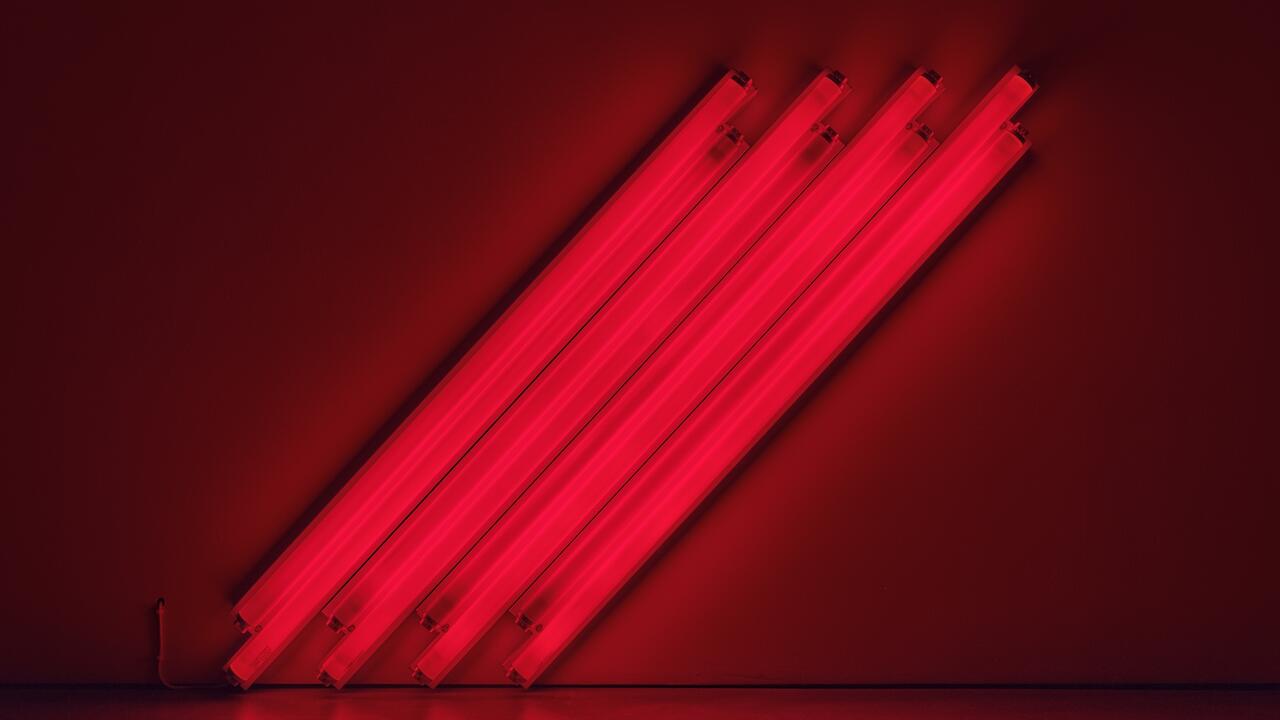Maureen Gallace
Small, bucolic paintings slowly give way to perfidious abstractions that have relatively little to do with the vernacular structures of the New England landscape that they depict. Maureen Gallace’s paintings are welcomingly complex if you give them time. As I returned to her exhibition at The Art Institute of Chicago several times throughout the course of last summer, the 21 paintings that comprised the show stubbornly unfolded their knotty relationship to ideas of psychological and geographical distance and the formal vocabulary of picture-making. Although they appear to be content simply to be charming works that could quietly co-exist among the quaint barn and seagull pictures hanging in an upscale souvenir gallery in Cape Cod, they require slow analysis, structural dissection and a historical dialogue with American landscape painting.
Cloaked in the genre of a regional landscape practice, Gallace’s images have nothing to do with observational painting. They have little concern for naturalism or realism. She paints from photographs, a fact that is rarely mentioned when discussing her work. Her use of colour is highly sophisticated, unnatural and yet harmonious in chromatic reality. Simple geometries rendered with slightly faulty perspectives comprise the barns, clapboard outbuildings and beach houses that occupy the middle space of her pictures. Palpable amounts of wet into wet paint ice her small canvas and panel supports. This gives her work an object-quality that is also underscored by her intense compositional symmetries, which emphasize the painting’s edge. Yet it takes a great deal of study and patience on the viewer’s part to recognize these innocuous-looking little landscape paintings as highly abstract and stylized.
Gallace is pictorially consistent, repeating a compositional format that includes stripped-down architectural structures centred in a middle ground. Her horizons are predictably located near the half-way point of her paintings. Her foregrounds are vacant, and swaths of open sky constitute the background. This formula provides her with an opportunity for painterly invention in colour, form, surface and contrast. Take, for instance, Cape Cod, Winter (2004), an almost square oil on panel depicting two adjoining white rectangular structures capped with contrasting dark-green pitched roofs. These buildings, like most of Gallace’s houses and barns, are bereft of such details as windows, doors, landscaping or inhabitants. Here the architectural volumes are firmly grounded in two horizontal bands of yellow and blue. Echoing the diagonals of the roofline is a massive white cloud formation on the right side of the painting. It is a tightly locked and refined composition built of flat planes, diagonal contours, infinite space and sculptural form.
This in-depth exploration of a limited set of rudimentary visual elements gets played out from painting to painting. Icy Barns (2003) employs a nearly identical arrangement of compositional elements to Cape Cod, Winter, with its insistence on harmonious proportions, pictorial stability and seductive, confectionary paint surface. With the exception of Self-Portrait (2006) and Bryan (2003) Gallace’s rigorous formal parsing of New England’s archetypal vernacular landscape as it persists in the 21st-century imagination is impressive. Self-Portrait appears to be a logical deviation into another type of genre painting. It reveals the artist in her studio, flanked by two of her landscapes. Like these, it is frontal but not confrontational, static but not dead. Byron, however, perhaps the weakest painting here, depicts the artist’s nephew sitting on a couch holding a guitar. The nature of the subject is out of sync with her timeless abstracting formalism, and the specificity of the boy – his moppy hair and layered T-shirts – displays uncharacteristically awkward formal choices and handling.
In terms of the paintings' psychological underpinnings Gallace’s landscapes do not peddle any obvious emotional sentiment or overt symbolism. Although you can locate Gallace within the purview of Edward Hopper, Charles Sheeler or Fairfield Porter, her project employs distance and isolation as structural devices, not necessarily as psychological ones. And even though this part of the American countryside is home for Gallace, her paintings remain remote and coolly objective, even uninterested. Perhaps this is where working from the photograph is essential to her practice. The compositional centring and spatial consistency in her paintings suggest that all of her source material is photographed from the roadside, maybe even from the window of a parked car. Nevertheless, she is comfortable enough to objectify this personally familiar environment without the melancholy unease of her forebears.
Her lofty clouds, red barns, autumn foliage and sandy beaches skim dangerously close to quaint. But her formal acumen keeps her subjects from revealing too much. The sureness and speed with which Gallace slips paint into paint leaves the viewer with puzzlingly elegant abstractions disguised as comforting regional landscapes.













